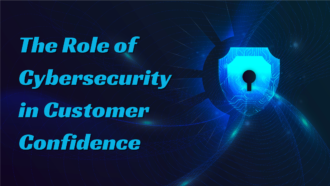The Evolution of Cybersecurity: Past, Present, and Future Trends
- 1 The Evolution of Cybersecurity
- 1.1 The Past: Laying the Foundation
- 1.2 The Present: A Dynamic Battleground
- 1.3 Zero Trust Security: A Paradigm Shift
- 1.4 The Future: Emerging Challenges and Solutions
- 1.5 AI and Machine Learning in Cybersecurity:
- 1.6 Zero Trust Architecture:
- 1.7 Cloud Security:
- 1.8 IoT Security:
- 1.9 Quantum Computing and Cryptography:
- 1.10 Ransomware Evolution:
- 1.11 Regulatory Compliance:
- 1.12 Human-Centric Security:
- 1.13 Supply Chain Security:
- 1.14 Biometric Authentication:
- 2 To Wrap Up
Cybersecurity has undergone a remarkable transformation over time, shaped by the digital landscape’s continuous expansion and the growing sophistication of cyber threats. In this exploration, we will delve into the historical context, current state, and anticipated future trends in cybersecurity.
The Evolution of Cybersecurity

The Past: Laying the Foundation
During the early days of computing, cybersecurity was a rudimentary concept, primarily focusing on physical access control since computers were large and isolated. The idea of remote attacks seemed implausible at the time. As technology advanced and networks became interconnected with the advent of the internet, cybersecurity was thrust into the forefront. Early measures involved basic tools such as firewalls, antivirus software, and encryption. While these were essential steps, they had limitations and couldn’t keep pace with the evolving threat landscape.
The Present: A Dynamic Battleground
The contemporary cybersecurity landscape is marked by relentless innovation and adaptation, with cybercriminals and cybersecurity professionals engaged in a continuous cat-and-mouse game. Cyberattacks have evolved significantly, encompassing various threats from malware and phishing to advanced persistent threats (APTs) and ransomware attacks. The cybersecurity industry has had to develop increasingly sophisticated tools and strategies to counter these ever-evolving threats.
One of the defining features of the current landscape is the shift towards a more comprehensive cybersecurity approach. This approach extends beyond external threat protection and includes tackling insider threats, safeguarding data, and complying with privacy regulations such as GDPR and CCPA. Security Information and Event Management (SIEM) systems have gained prominence, providing real-time monitoring and threat detection capabilities to help organizations stay ahead of threats.
Another noteworthy trend is the proliferation of cloud-based security solutions. As businesses transition to the cloud, the need for adaptable security measures to navigate these dynamic environments has surged. Cloud security platforms offer scalable and flexible protection, a necessity in today’s digital world.
Zero Trust Security: A Paradigm Shift
Zero trust security is emerging as a transformative concept in cybersecurity. In traditional security models, trust was implicitly granted once a user or device gained network access. However, this trust-based approach has proven to be susceptible to external and internal threats.
In contrast, zero trust security operates on the principle that trust is never assumed. Every user, device, or application is subject to continuous verification and authentication, regardless of location or network access. This approach adheres to the principle of “never trust, always verify.”
Implementing the zero trust model involves adopting micro-segmentation, continuous monitoring, and least privilege access policies. By enforcing stringent access controls and consistently validating user and device identities and security postures, zero trust security significantly reduces the attack surface, bolstering overall security.
The Future: Emerging Challenges and Solutions
The future of cybersecurity promises to be both challenging and promising. Cyber threats will continue to evolve, potentially becoming more autonomous and intelligent. The integration of AI and machine learning in cyberattacks poses a significant concern. However, the cybersecurity field is expected to advance in parallel.
Artificial intelligence and machine learning will be pivotal in detecting and responding to threats. These technologies can analyze vast amounts of data in real-time, identifying patterns and anomalies impractical for humans to discern.
Predicting the future trends in cybersecurity involves considering the evolving threat landscape, technological advancements, and changes in the way organizations approach security.
AI and Machine Learning in Cybersecurity:
- Use of AI for Threat Detection: AI and machine learning algorithms are increasingly being employed to enhance threat detection and response capabilities. These technologies can analyze vast amounts of data to identify patterns and anomalies indicative of cyber threats.
- Adversarial AI: As AI defenses strengthen, attackers may also leverage AI to craft more sophisticated and targeted attacks, leading to the emergence of adversarial AI where AI systems are pitted against each other.
Zero Trust Architecture:
- Continuous Authentication: Traditional security models rely on perimeter defenses, assuming that entities inside the network are trusted. Zero Trust Architecture challenges this by implementing continuous authentication, regardless of the user or device’s location.
Cloud Security:
- Shift to Cloud-Native Security: With the widespread adoption of cloud services, there is an increasing focus on developing security measures that are specifically designed for cloud environments, including container security and serverless security.
- Zero Trust for Cloud: Extending the zero-trust model to cloud environments to ensure that trust is not assumed based on the location of the user or resource.
IoT Security:
- Rising IoT Threats: The increasing proliferation of Internet of Things (IoT) devices introduces new attack vectors. Securing these devices becomes crucial to prevent large-scale attacks leveraging compromised IoT devices.
- Standardization of IoT Security: Efforts to establish industry standards for IoT security to ensure that manufacturers build security into devices from the outset.
Quantum Computing and Cryptography:
- Quantum-Safe Cryptography: The advent of quantum computing poses a threat to current cryptographic methods. As a preemptive measure, there is a growing emphasis on developing and implementing quantum-resistant or quantum-safe cryptographic algorithms.
Ransomware Evolution:
- Double Extortion: Ransomware attackers are evolving their tactics, incorporating double extortion methods where stolen data is not just encrypted but also exfiltrated. Attackers threaten to release sensitive information unless the ransom is paid.
- Targeting Critical Infrastructure: There is a growing concern about ransomware attacks targeting critical infrastructure, such as power grids and healthcare systems, with potentially severe consequences.
Regulatory Compliance:
- Stricter Data Protection Regulations: Governments and regulatory bodies are likely to introduce stricter data protection regulations to enhance cybersecurity and protect individuals’ privacy.
- Global Collaboration on Cybersecurity Regulations: Increased international collaboration to establish common frameworks for cybersecurity regulations, especially in the context of cross-border cyber threats.
Human-Centric Security:
- Security Awareness Training: Recognizing that human error is a significant factor in cybersecurity incidents, organizations are investing more in comprehensive security awareness training for employees.
- User-Centric Security Solutions: Designing security solutions with a focus on user experience to encourage better adoption and adherence to security best practices.
Supply Chain Security:
- Third-Party Risk Management: Organizations are placing a greater emphasis on assessing and mitigating the cybersecurity risks posed by third-party vendors and suppliers.
- Secure Software Development Practices: Integrating security into the software development lifecycle to address vulnerabilities before products or services reach the market.
Biometric Authentication:
Widespread Adoption: The use of biometric authentication methods, such as fingerprints and facial recognition, is expected to become more widespread as a means to enhance user authentication and access control.
It’s important to note that the cybersecurity landscape is dynamic, and new trends may emerge in response to evolving threats and technologies. Organizations need to stay vigilant, continuously update their security measures, and adapt to the changing cybersecurity landscape.
To Wrap Up
The evolution of cybersecurity, from its historical roots to its present state, reflects an ongoing journey of adaptation and innovation. Looking ahead, it’s evident that cybersecurity will continue to play a pivotal role in our increasingly digital lives. Zero trust security represents a fundamental paradigm shift that aligns with the evolving landscape, emphasizing the vital importance of continuous verification and access control.

















